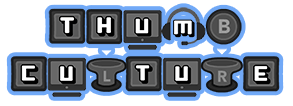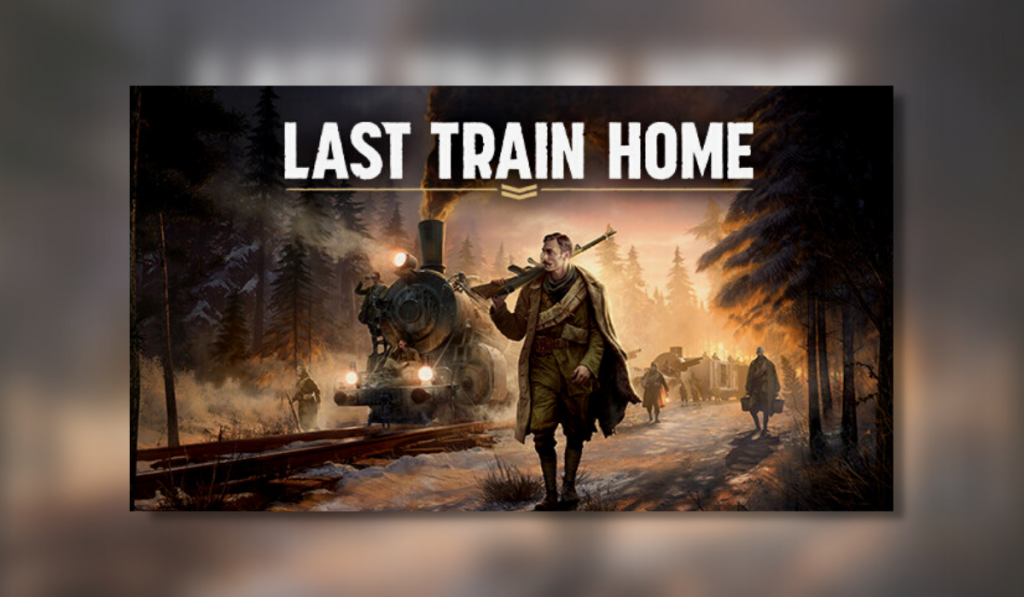
The Last Train Home is a real-time strategy game with management elements. Developed by Ashborne Games and published by THQ Nordic, Last Train Home will be released on Steam on November 28th of this year.
A Long, Arduous Journey
Control a small neutral legion of soldiers in real-time, make tough decisions and manage what little resources you have in Last Train Home. The war has ended, but a Civil War has broken out. Trying to reach the boat that will take their soldiers home and away from the now war-torn wasteland, the group must travel on an armoured train and try to take as many soldiers as they can home with them.
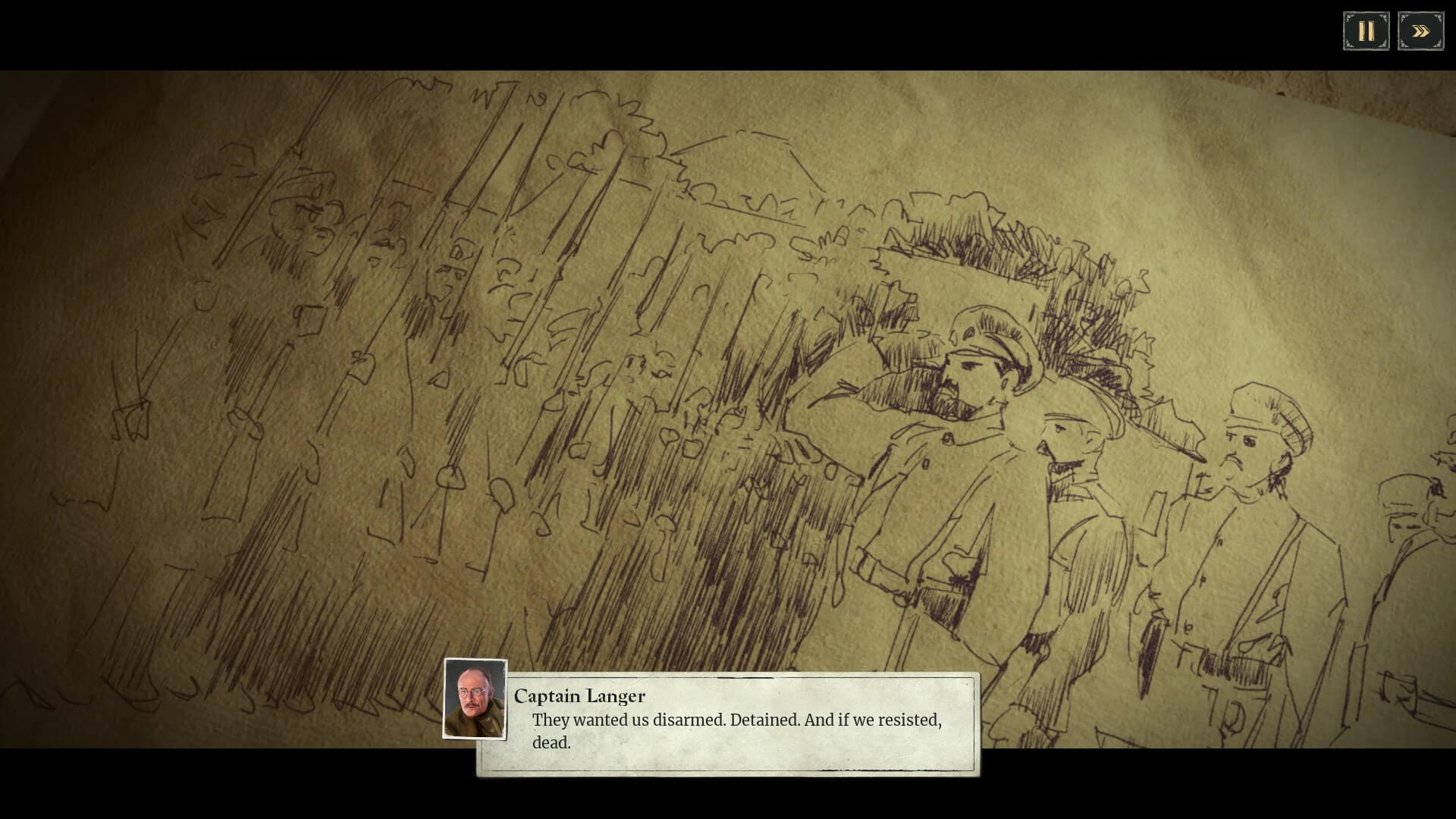
Gameplay
Last Train Home has three elements to its gameplay: making choices, strategy and resource management. You can find new soldiers and more resources during missions. Resources such as food are needed to craft better dishes for your soldiers. Metal is for crafting equipment and upgrading the train, while coal is fuel for the train. At train stations, you can trade for equipment, resources and consumables. You can also sell your excess resources at train stations and houses you find along your journey.
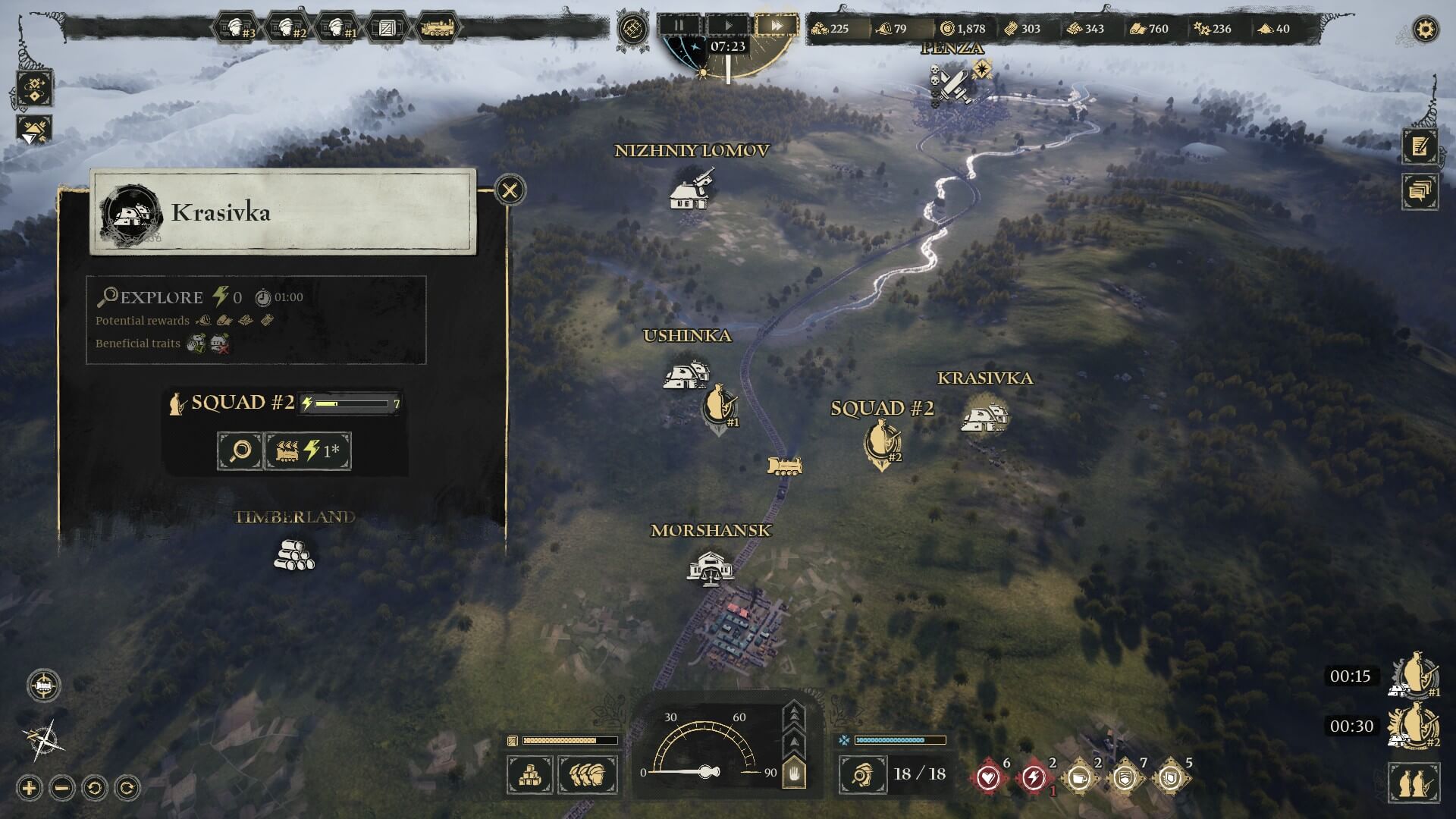
Choices in the game vary in importance and outcome. There are smaller choices that will only result in more dialogue, while others may get you extra food or injure one of your soldiers. The more story choices are what matter most. For example, I had a choice to go north, where other ‘legionnaires’ travelled (which the game classed as risky) or go south to an unknown route (which was the safe option). I chose to take the risky route because I’m a glutton for punishment.
The Train
The armoured train is how your legion of soldiers gets to the next destination and the next mission. To keep soldiers healthy and safe through their journey, players must upgrade the train via metal, fuel it with coal, and add armour and carts. You can get different carts for the train, such as a kitchen or medical wing. Upgrading the carts and the train increases efficiency. For instance, upgrading Infantry carts lowers the chance of rat infestations and, in turn, lowers your soldier’s likelihood of getting sick. Hospital cart upgrades can add more beds, and upgrading the locomotive allows it to carry more items.
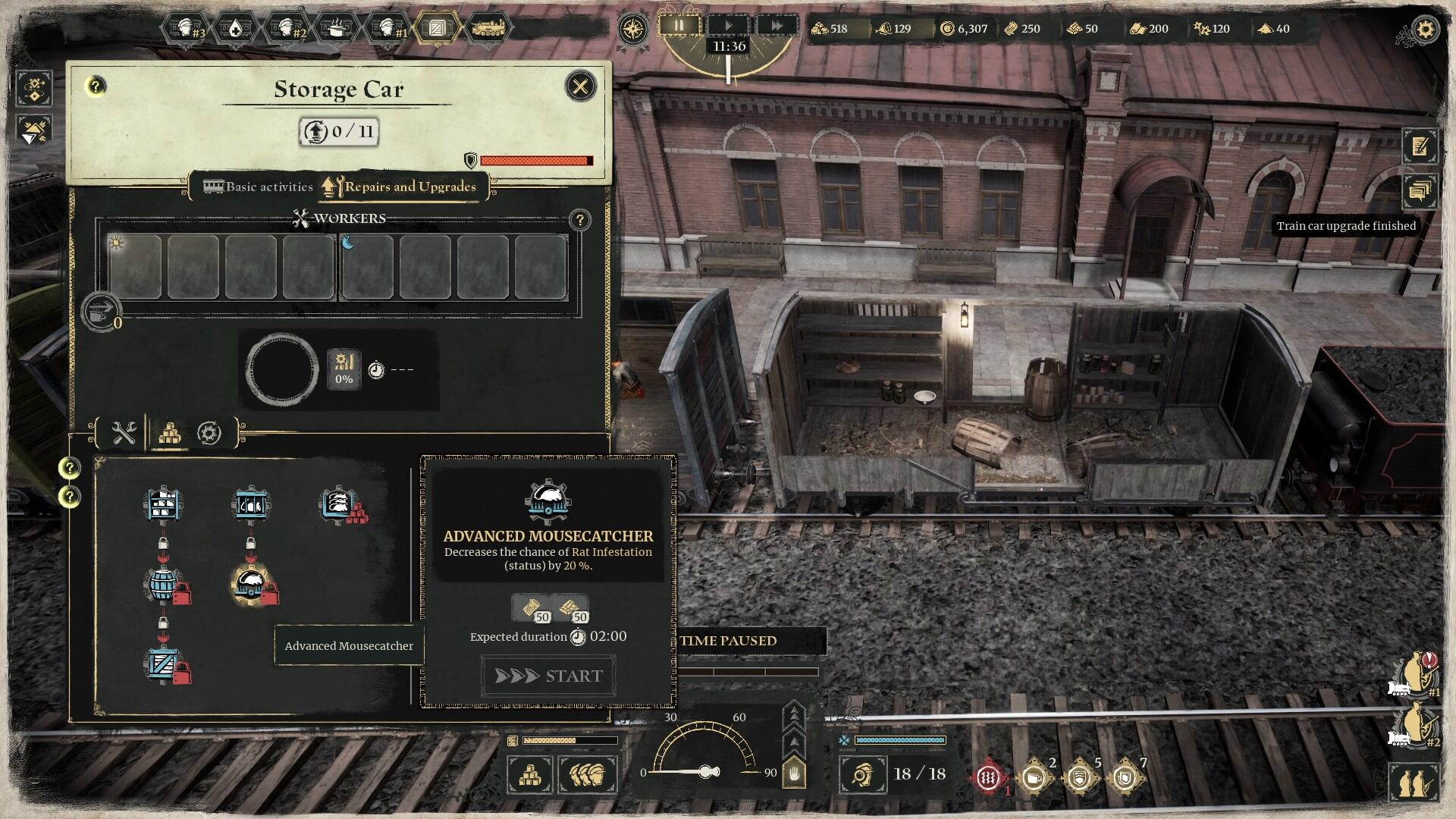
The player can adjust the speed of the train or stop it. However, if they use overdrive, the train will move faster but consume more fuel.
Missions
Completing missions is how players progress to the next part of the story in Last Train Home. Before entering a mission, you can select up to eight squad members. When entering a new area, you must send at least a three-person squad, which takes Stamina. Not all missions allow the player to control their squad.
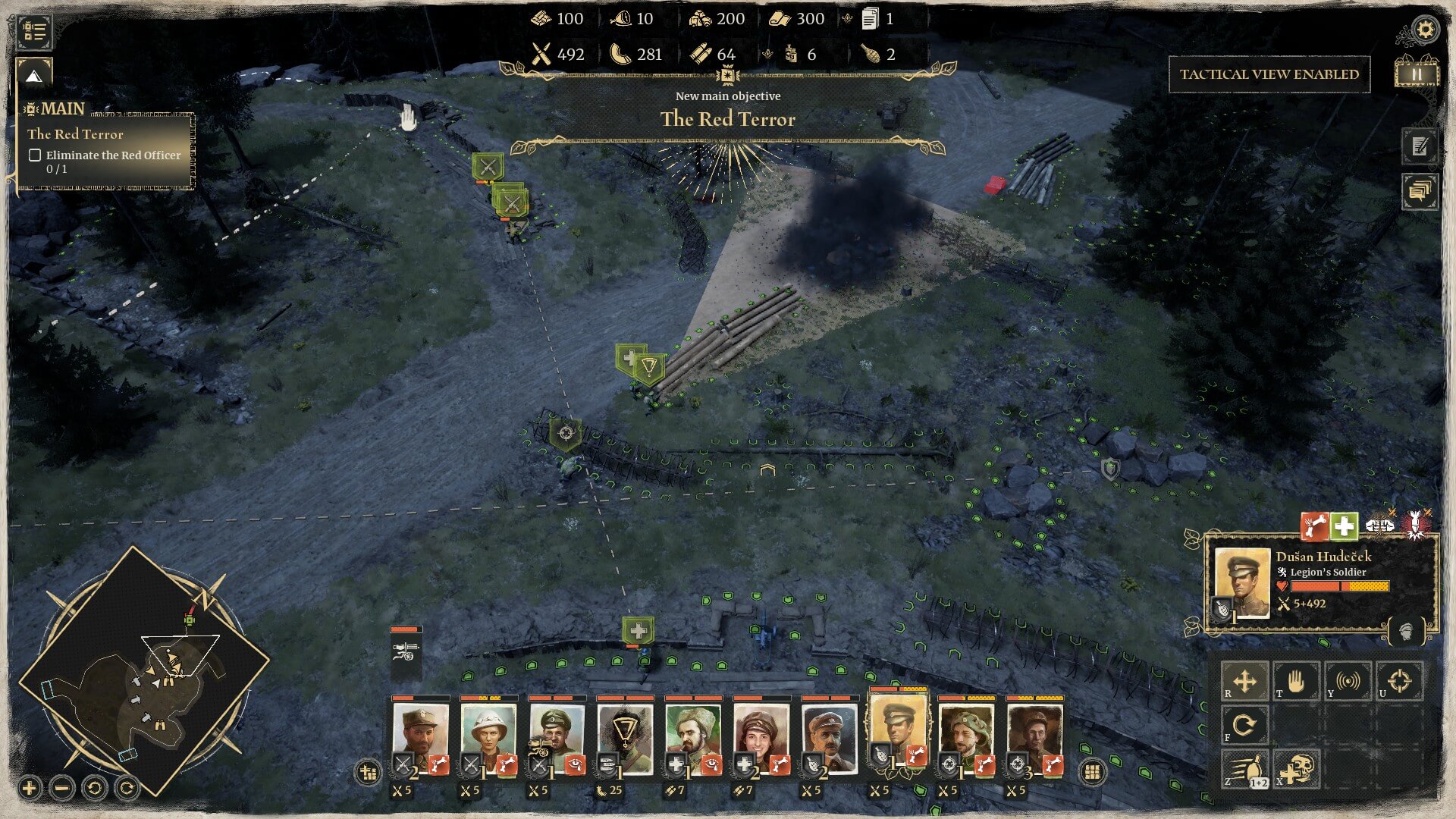
There are several actions players can take during a mission to help tip the scales in their favour. Your squad can go into stealth mode, which allows them to perform silent melee kills. Tactical view will pause the game and highlight troops. The train can also provide support via artillery strikes when troops are off the train. At the end of a mission, players can assign medals to squad members to give them extra XP.
Needs & Traits
The soldiers have individual needs and traits. These needs are Stamina, Health and Morale. Stamina depletes when sending a soldier to investigate an area (when not on a mission). Health replenishes via consumables, and if drained, the soldier dies. If Morale gets too low, the soldiers might abandon the train, and the player loses them. Players can raise Morale with things such as alcohol, but there is a chance you may give them the Addiction trait.
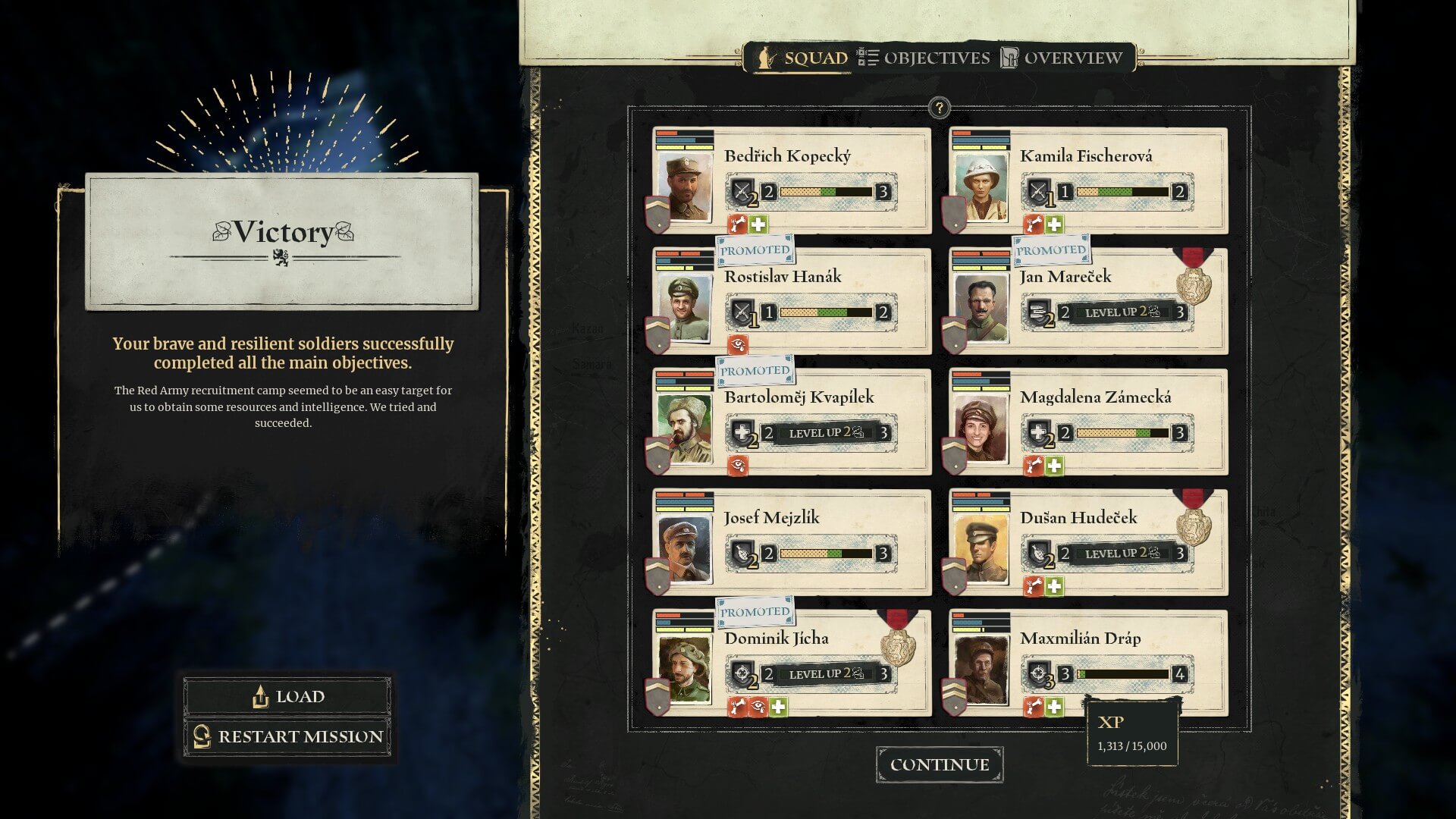
Traits affect how efficient a soldier is at a task and negatively or positively impact the soldier and how they react in certain situations. A soldier with the Hunter trait may get extra food from lakes and forests. Other traits, such as the Sickly trait, mean the soldier is more likely to get sick. Some traits may also make soldiers more efficient at specific jobs.
Roles & Skills
Soldiers can take on various roles, including non-combatant, but must fulfil requirements first. Every soldier has a set of stats, such as Dexterity, Intelligence, etc. For example, a Doctor needs at least six Intelligence, and a Machine Gunner needs at least five Fitness and four Dexterity. While all soldiers have a set amount of stats to start with, players can add points to any desired stat after levelling up.
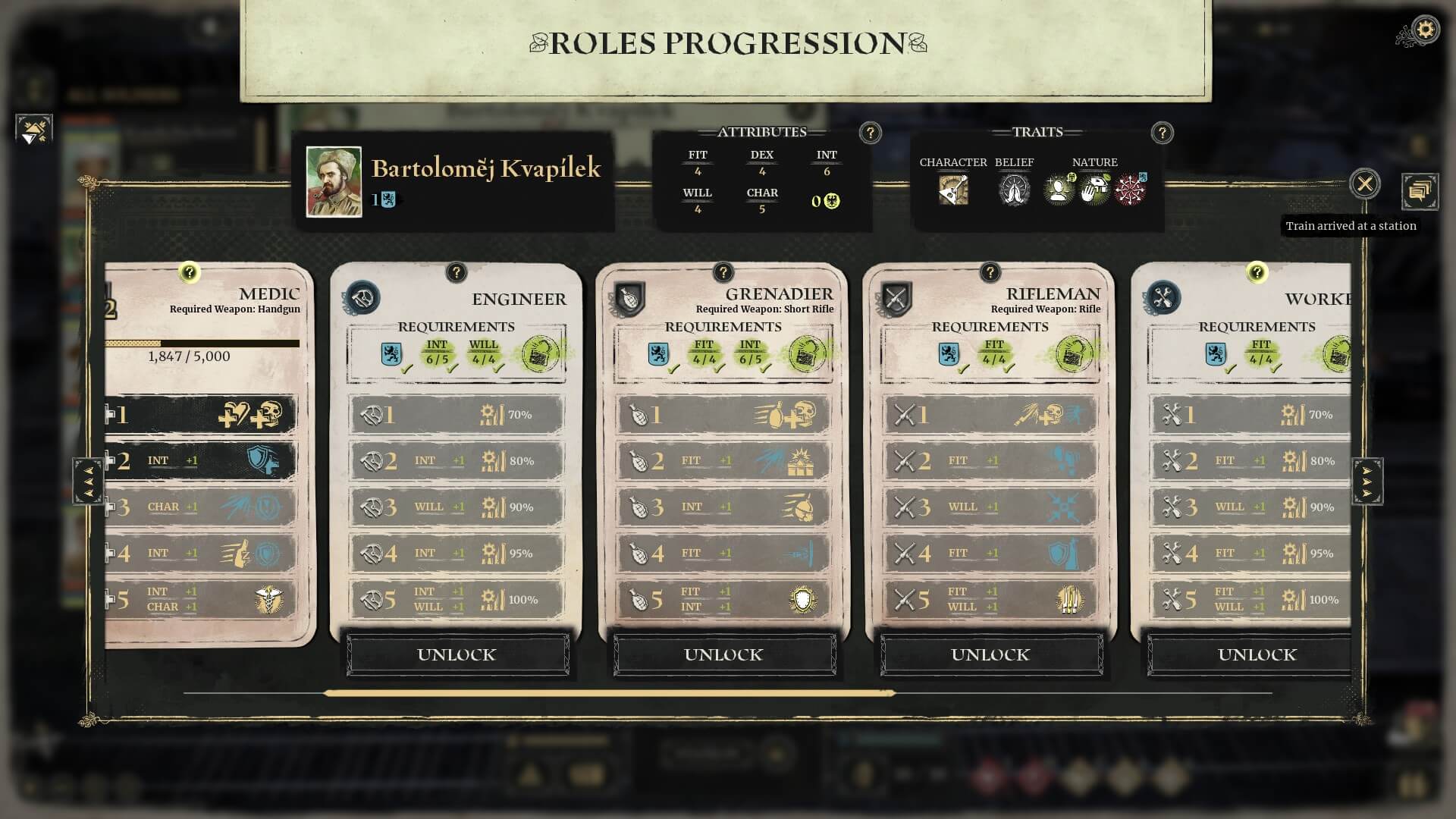
In certain roles, soldiers unlock passive and active abilities. A level 1 Medic can heal and stabilise, but at level 5, they have a 50% chance of not depleting a medkit when healing. An example of a passive ability is a better chance of hitting a target. Active abilities are special skills soldiers can perform. The Scout can get a ‘Critical Shot’ ability: a guaranteed kill in one shot.
Graphics & Audio
There is plenty to take in with Last Train Home. The voice acting is incredible and truly breathes life into each character. There is an audio option called Immersive. The mode has the characters in-game speaking in their native language. Though the option to have the characters talk in their native tongues is available and sounds superb, the English voice acting is stellar in its own right. The audio quality is good, and the music is fantastic and sometimes downright epic during battles.
The graphics are no slouch, either. The cutscenes are a mix of live-action scenes and beautiful sketches. Overall, the visuals are brilliant. I particularly love the contrast of the lamp lighting the street during grey, rainy segments and how you can see the droplets splash on the cobblestone ground.
Final Thoughts
The management side of the game can seem complex at first. Though it warns you that you can’t return to the area beforehand, I wish you could backtrack to previous stations to get anything you missed. The only bug I suffered was when I was proceeding to the next area of the story, and the game informed me I’d left two men behind and abandoned side quests. I reloaded the game several times and checked that I had no active side quests. The men were also happy and not actively working. It was frustrating as they were two of my best men.
The voice acting and visuals in the game were phenomenal and did a fantastic job of drawing you into the story. Overall, the game is great, and I would recommend it to any RTS fan.
I award Last Train Home the Thumb Culture Platinum Award.

Disclaimer: A code was received in order to write this review.
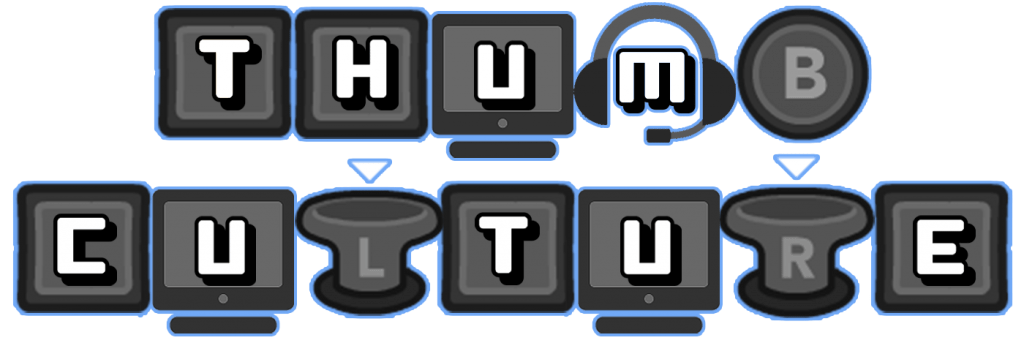
YouTube | Facebook | Twitter | Instagram | Discord | Podcast
